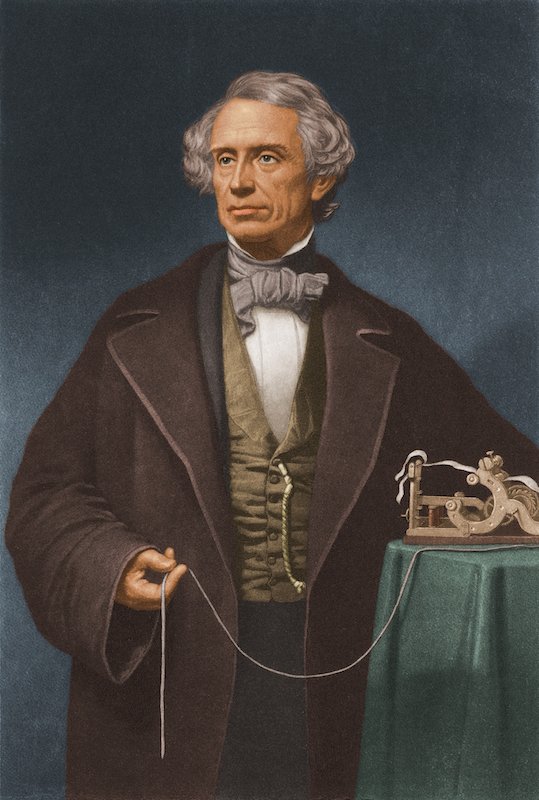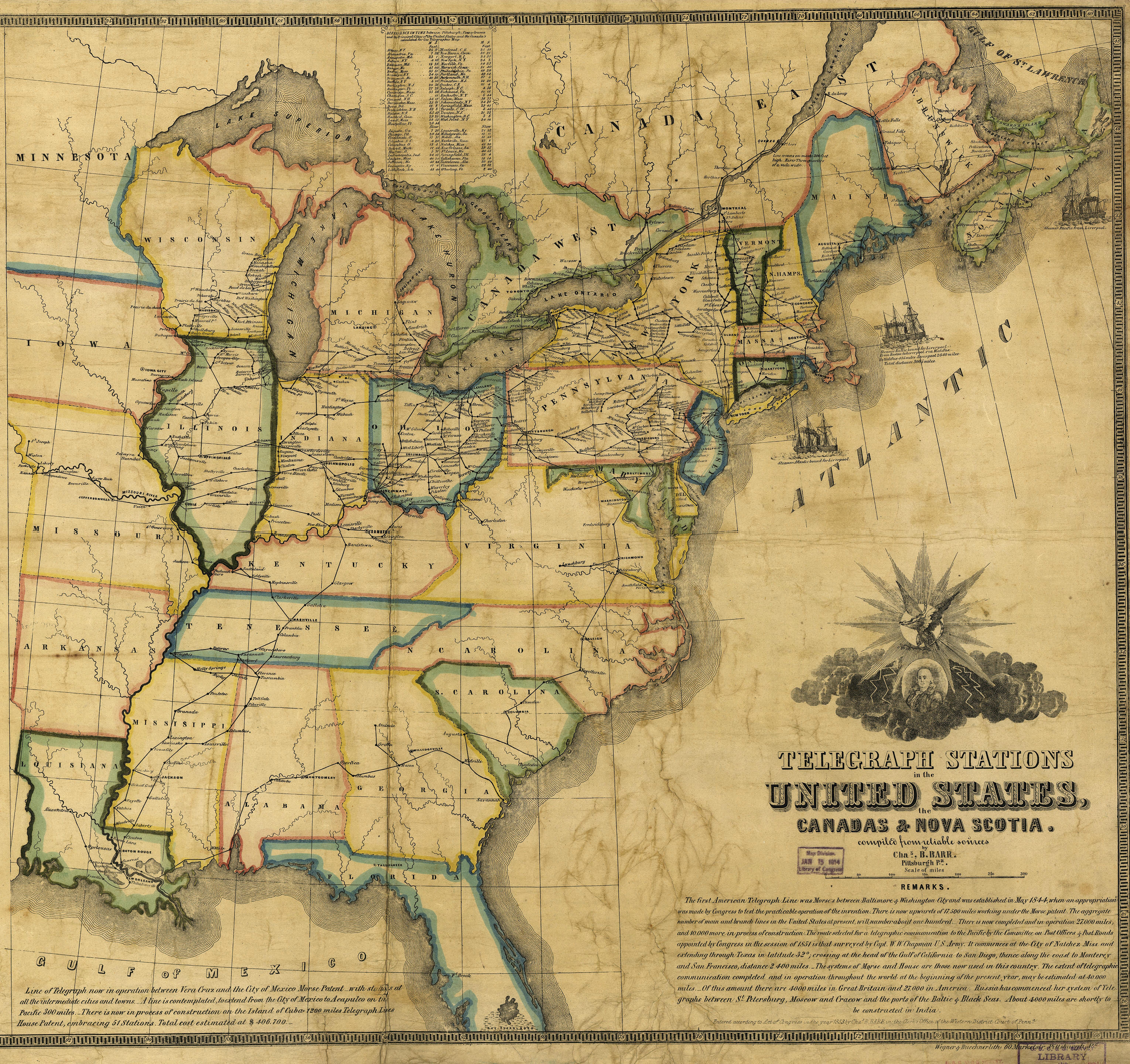Before the Quadruplex Telegraph
Before the invention of the telegraph, long distance communication meant writing a letter and waiting days or even weeks for it to arrive. Early attempts at resolving this, using systems like semaphores (flag based signalling) or chains of fires were extremely limited in the messages they could convey. One invention changed all of this: the telegraph allowed for fast and reliable long distance communication, and it could carry complex messages.
“What Hath God Wrought?” was the first message ever sent by telegraph. It was a reflection of the magnitude of the change that the telegraph would bring. The telegraph massively improved long distance communication. Even so, it still had some flaws.
Like any communication system, the telegraph was constrained by the rate and cost of sending messages. To use a telegraph, messages were encoded in Morse Code (invented by Samuel Morse). These messages were transmitted by sending electrical signals down wires, so only one message could be sent per wire at one time. Telegraph wires were expensive, and as demand increased companies needed to run more wires between cities. Even with the additional wires, the telegraph was still too expensive for the everyday user.

Samuel Morse, 1850, Hulton Archive
It looked like the telegraph would not be economical enough to meet increasing communication demands. Fortunately, inventor Thomas Edison was going to change that.


